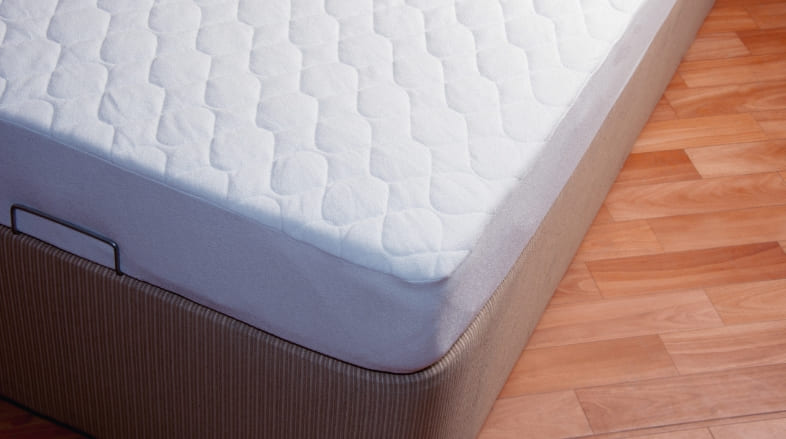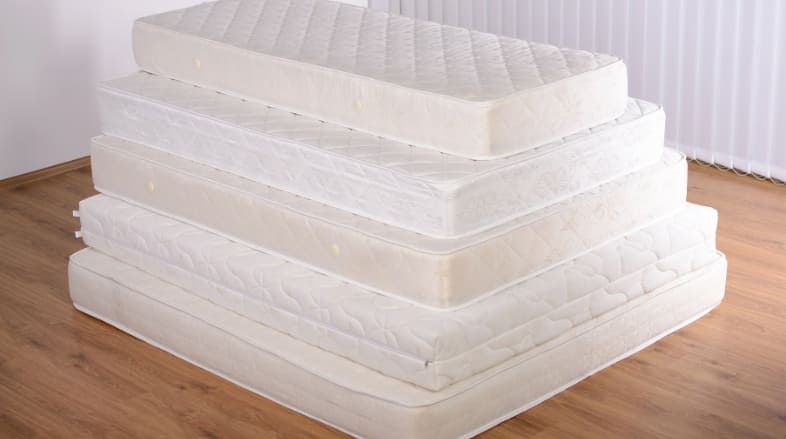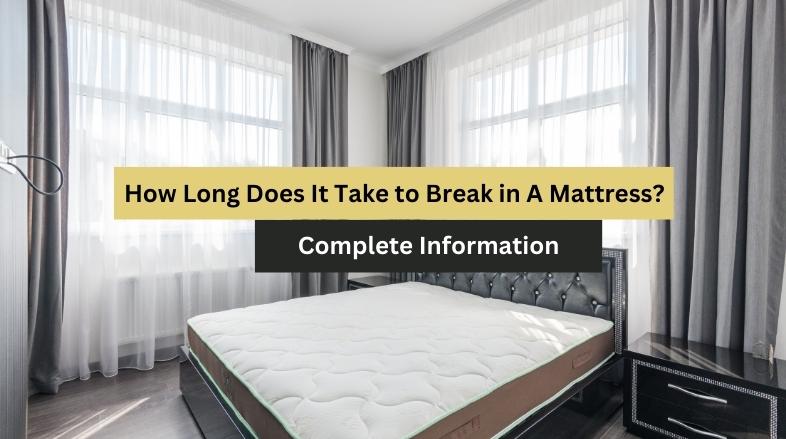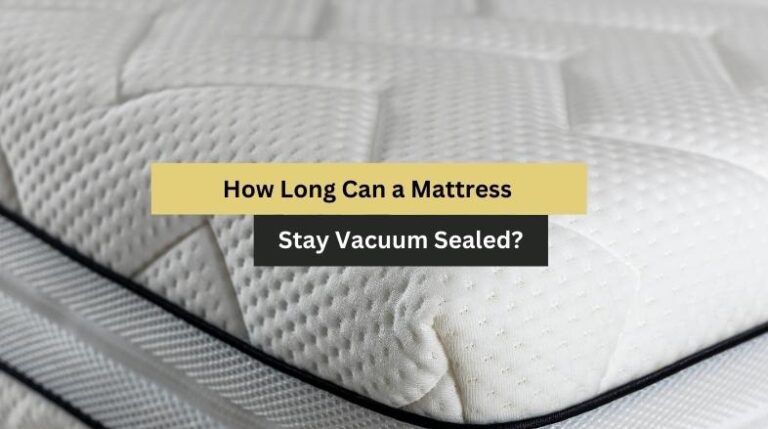How Long Does It Take to Break in A Mattress?
Are you looking forward to obtaining a new mattress? You ought to be! A new mattress can provide you with the pleasant sleep you’ve sought. Nevertheless, before you can enjoy all of the benefits of your new bed, you must properly break it in.
Breaking in your mattress may appear to be an unneeded hassle, but it is an important step in making the most of your purchase. Breaking in your mattress allows it to conform to your body and provides ideal comfort and support.
In this tutorial, we’ll review everything you need to know about breaking in your new mattress. You’ll discover how long it takes to break in a mattress, the many options available, and when to consider returning your mattress.
So, let’s get started and discover how to break in your new mattress properly!
How Long Does It Take to Break In a New Mattress?
The amount of time it takes to break in a new mattress varies depending on the type of mattress. Memory foam and hybrid mattresses, particularly those with higher densities, typically require the most time to break in, usually around 60 days. Innerspring mattresses can take up to 30 days to fully break in, whereas latex mattresses require only 2 to 14 days.
How to Break in Your Mattress?

It can take some time to break into a new mattress, but there are several actions you can take to expedite the process. Here are some pointers on how to properly break in your mattress:
- Let the mattress air out: When acquiring your new mattress, allow it to air out for a few hours. This allows any lingering odors or off-gassing to disappear.
- Sleep on your new mattress every night: The longer you sleep on it, the faster it will break in. Sleep on the mattress every night for at least a few weeks.
- Employ a robust and supportive base beneath your mattress: Make sure your mattress is resting on a sturdy and supportive foundation, such as a box spring or platform bed.
- Walk on the bed to add pressure: You can assist break in your mattress by walking on it in different spots, especially where you will sleep.
- Turn up the heat: Heat can help soften up the materials in your mattress, so try turning up the thermostat a few degrees.
- Discuss the procedure with your partner: Discuss the breaking-in process if you share a bed. This can help verify that you’re both doing the same things to break in the mattress.
- Let your mattress time to break in: It might take anywhere from a few days to a few weeks to break in a mattress. Provide your mattress the necessary time to conform to your body.
- Consider exchanging or returning the mattress: If you’re still unhappy with your mattress after a few weeks, consider swapping or returning it. Most mattress businesses provide a trial period to verify that you are happy with your purchase.
Remember that each type of mattress has a distinct breaking-in period, so follow the manufacturer’s instructions. Following these procedures and being patient will allow you to break in your new mattress and have a restful night’s sleep.
Different Types of mattresses require different techniques.

Several types of mattresses may necessitate different ways of breaking in. Memory foam and hybrid mattresses are typically the most difficult to break in, especially if built of high-density memory foam. It may take many weeks to feel completely at ease on these beds. On the other hand, traditional spring mattresses with a pillow top are usually comfortable right away since they conform to your weight. However, fully breaking them in may take up to 30 days.
Latex mattresses have the shortest break-in period, typically taking a few days to two weeks. The time required varies depending on whether the latex is synthetic or natural and if the mattress is 100% latex or a combination. Ultimately, it’s critical to understand your mattress’s requirements to break it in properly and pleasantly.
Techniques for Breaking In Different Types of Mattresses
The process of breaking in a new mattress varies based on your mattress type. This section will go through the many methods for breaking in various mattresses.
Memory Foam and Hybrid Mattresses
Memory foam and hybrid mattresses are notoriously difficult to break in. This is especially true for memory foam mattresses with a high density. You should break in your new memory foam or hybrid mattress for at least 60 days before deciding if it suits you.
Remember that a high-density memory foam mattress will take longer to break in than a lesser density memory foam mattress. In general, the longer the break-in period, the higher the memory foam density.
Innerspring Mattresses
Innerspring mattresses are meant to conform to your weight and provide immediate comfort. This is especially true if your mattress has a pillow top. However, an innerspring mattress can take up to 30 days to fully break in.
Because springs decay faster than memory foam, rotating your mattress every three to six months is recommended to break it in evenly and prevent a mattress sinkhole.
Latex Mattresses
Latex mattresses have the lowest break-in period and are used in higher-end luxury mattresses. A latex mattress typically takes two to fourteen days to break in. The time required varies depending on whether the latex is synthetic or natural and if the mattress is 100% latex or a combination.
It can take some time to break in your new mattress, but it’s crucial to give it time to react to your body and sleeping habits. The time frame and strategies for breaking in will differ depending on the sort of mattress you have. Remember these suggestions to get the most pleasant and supportive sleep possible.
When to Consider Returning Your Mattress
Purchasing a new mattress is an investment in your sleep and general health, so be sure it’s correct. But what if you’ve already purchased a new mattress, and it still needs to meet your expectations? When should you consider returning it?
You may need to return a new mattress for a variety of reasons.
First and foremost, if your mattress is interfering with your sleep, it’s time to return it. These could involve discomfort, soreness, and a lack of support. It’s critical to monitor any changes in your sleep quality after purchasing a new mattress. If you wake up with muscle or joint stiffness or sleep better in hotels or at friends’ houses, it may be time to return your mattress.
A mattress that is either too hard or too soft is a common reason for a return. Choosing the ideal hardness level can be difficult, especially for combo sleepers who vary in positions during the night. For example, a bed may feel comfortable lying on your side but overly soft when lying on your back.
A mattress saggy or damaged in particular sections is another reason for a return. This could indicate that your mattress isn’t giving adequate support to your body. Loud springs and an increase in allergies and asthma symptoms can indicate that it’s time to consider returning.
Finally, if you’re unhappy with your new mattress and it’s harming your sleep quality, it’s worth returning it. Several mattress firms provide substantial trial periods and return policies, so use them if necessary. Remember that getting a good night’s sleep is critical to your total health and well-being.
FAQs
How Long Do Mattresses Last?
A mattress’s lifespan can vary based on numerous factors, including the materials’ quality and how well it is cared for. A mattress can last anywhere from 7 to 10 years on average, with some high-quality models lasting up to 15 years. But, if you detect symptoms of wear and tear, such as drooping or lumps, it may be time to hunt for a new one.
Should a New Mattress Cause Back Pain?
A new mattress should not cause back pain, but some people may suffer minor discomfort as their bodies acclimate to a new sleeping surface. If you have recurrent back pain after buying a new mattress, you should consider whether the mattress matches your body type and sleeping style.
Should You Walk on a New Mattress to Break It In?
Walking on a new mattress is optional to break it in. Putting too much weight on a new mattress might harm the fabric and shorten its lifespan. Instead, use the measures described in Section III to successfully break in your new mattress, such as allowing it to air out, sleeping on it every night, and putting a sturdy base underneath.
Conclusion
Finally, breaking in a new mattress requires time and patience. Innerspring mattresses can take up to 30 days to fully break-in, while memory foam and hybrid mattresses can take up to 60 days. Latex mattresses have the shortest break-in period, which ranges from 2 to 14 days. Rotate your mattress every three to six months to guarantee even wear and avoid sinkholes. If your new mattress is causing you pain or disrupting your sleep, try replacing or returning it. Remember to air out your mattress, utilize a firm foundation, and allow it time to settle. With these ideas and strategies, you’ll sleep well in no time!







